Restoring a Forgotten Crown
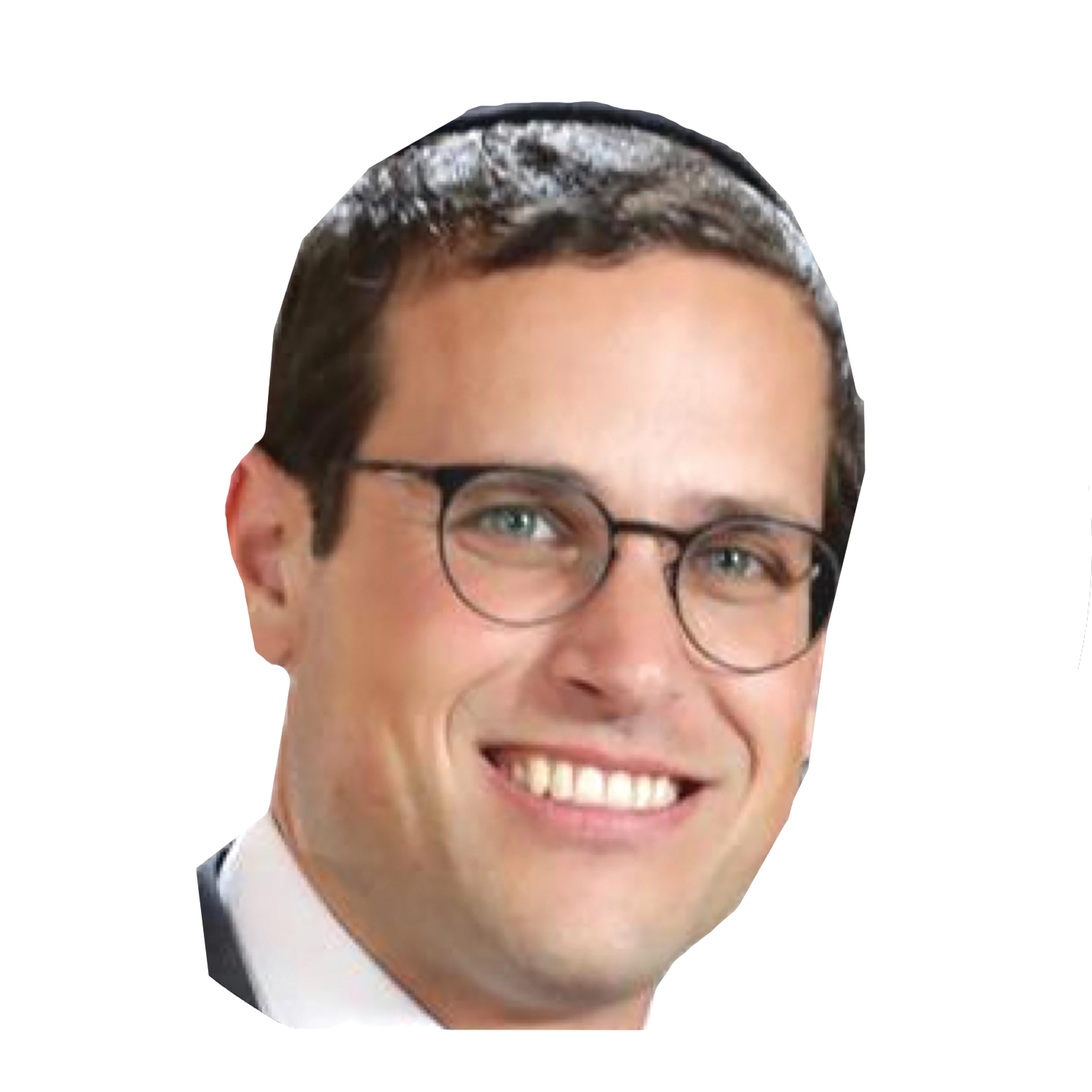
Two young talmidei chachamim have made it their mission to redeem the Torah of the great German rabbanim by republishing seforim long thought lost
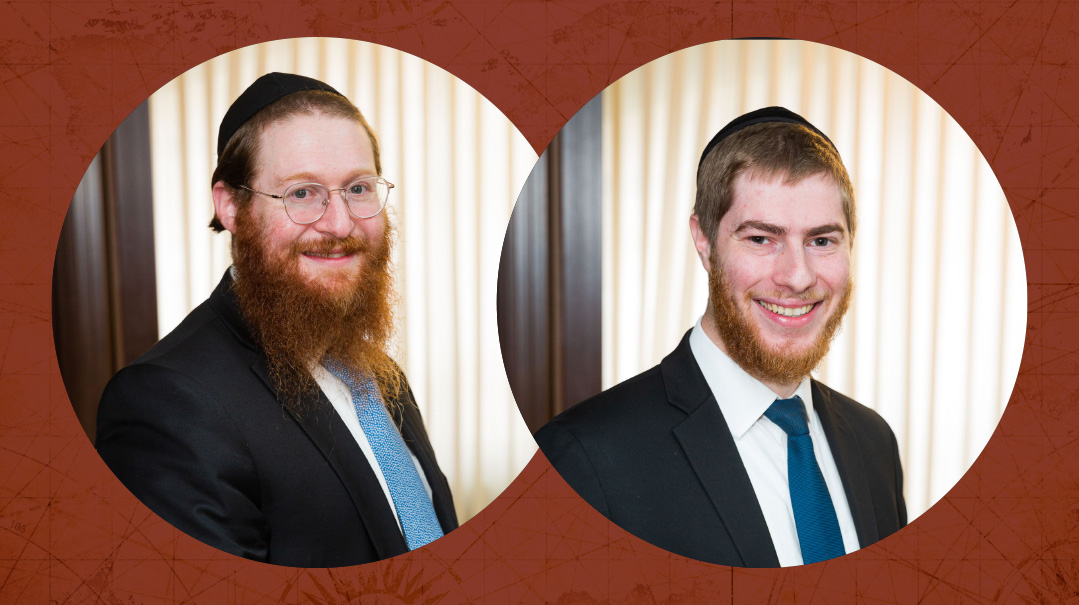
Photos: Elchanan Kotler
“So this is a research institute?”
I call out above the din in the bustling beis medrash.
This is my first question for Rabbis Eliyahu Simcha Hellmann and Avraham Bamberger on this sunny day in Jerusalem. It’s a challenge to hear their answer, and the background noise makes me realize how silly the question is.
Nowadays there are likely hundreds of kollels in the Holy City — but only one Kollel Achsanya shel Torah, nicknamed “Kollel Ashkenaz.” This pioneering venture is bringing a largely forgotten past to life, and the yungeleit show palpable excitement when they can shed new light from an old source on a familiar sugya.
It is axiomatic that the lands of Ashkenaz — generally taken to refer to Germany and Western Europe — were hubs of Torah life during the Middle Ages. So many revered figures from that time and setting — among them Rashi, the Baalei Tosafos, Rav Yehuda Hachassid, the Rosh, and the Mordechai — are still studied daily in yeshivos and batei medrash worldwide.
As is well known, the ensuing centuries saw the Torah world’s center of gravity gradually shift to points further east. But for some reason, it is a nearly forgotten fact of history that Torah continued to flourish uninterrupted in the Germanic lands over that span. A prodigious literature produced by hundreds of great poskim from the 17th through the 20th centuries has languished, and the names of its authors are almost completely unknown today.
“Ask your average frum Yid nowadays what he knows about traditional German Jewry in modern times, and he’ll probably mumble about Yekkishe minhagim, Rav Samson Raphael Hirsch and Torah im derech eretz, and maybe the Aruch Laner,” says Rabbi Eliyahu Simcha Hellmann. “But the reality is that lo paska yeshivah — Torah study didn’t cease in Ashkenaz, from the times of Rabbeinu Gershom until the Holocaust, a span of 1,000 years.”
Rabbis Hellmann and Bamberger, two accomplished young talmidei chachamim — both of whom trace their lineage to 19th-century giant Rav Yitzchak Dov Bamberger, the Würzburger Rav — have made it their mission to redeem the Torah of these great German rabbanim. They hope to do this by cataloguing and republishing seforim long thought lost, but perhaps more importantly by bringing the Torah of Ashkenaz back to life in the beis medrash.
The roshei kollel’s enthusiasm is infectious. What attracted me to the project, though, was their keen appreciation for history. They have tirelessly dug into the past and discovered great treasures, and now they want to share their findings with the Torah world.
Not Just Books
How did it come to pass that centuries of Ashkenaz Torah scholarship were almost completely consigned to oblivion? As a proud descendant of German rabbinical aristocracy, Rabbi Hellmann was disturbed by the thought of this rich literary legacy being relegated to the dustbin of history. He set about figuring out what could be done about it.
Rabbi Hellmann turned to his rebbi, Rav Binyamin Carlebach, a rosh yeshivah of Mir Yerushalayim and himself a scion of a prominent German rabbinical family. Rabbi Hellmann has been a learning chavrusa of Rav Binyamin for the past six years, and sought his advice about embarking on a project to republish out-of-print seforim and manuscripts authored by German rabbis.
“If you become a sefer publishing company, then it’s likely that all of this valuable and historic Torah will be purchased by only a few and will primarily collect dust on bookshelves,” Rav Binyamin advised him. “What you need to do is bring the Torah into the beis medrash, where it belongs. Open a kollel, and have the members study this heretofore-unknown Torah. Within the framework of study in a kollel, these seforim can be published.”
And so Kollel Achsanya shel Torah was born. Rabbi Avraham Bamberger, another Mir alumnus and descendant of German rabbanim, was recruited to join the initiative. The kollel now operates in Jerusalem’s Ramat Eshkol neighborhood, under the auspices of Rav Binyamin Carlebach, Rav Eliyahu Meir Klugman, and Rav Yisrael Mantel, who provide guidance to the roshei kollel on the publication of new seforim and on kollel operations.
Achsanya shel Torah also publishes a bimonthly pamphlet that provides a taste of Toras Ashkenaz — exerpts from seforim and manuscripts by well-known gedolim that are kept in libraries and private collections around the world, such as Teshuvos Rabi Akiva Eiger, chiddushim of the Shaagas Aryeh, and divrei Torah of the Baal Hafla’ah — along with a sneak peek at recently discovered manuscripts being prepared for publication. Readers can open a door onto a lost world.
“Everyone is acquainted with the Rishonim of Ashkenaz,” says Rabbi Hellmann. “We’re all familiar with the Maharam of Rothenburg, down to the Maharil and the Terumas Hadeshen, who recorded centuries of Ashkenaz customs and halachah. Once we arrive at the 17th century, however, and especially when we hit the 19th century, Germany seemingly falls off the Jewish map as a significant Torah center.”
We return to the question: How did that happen? How is it that this history is completely unknown?
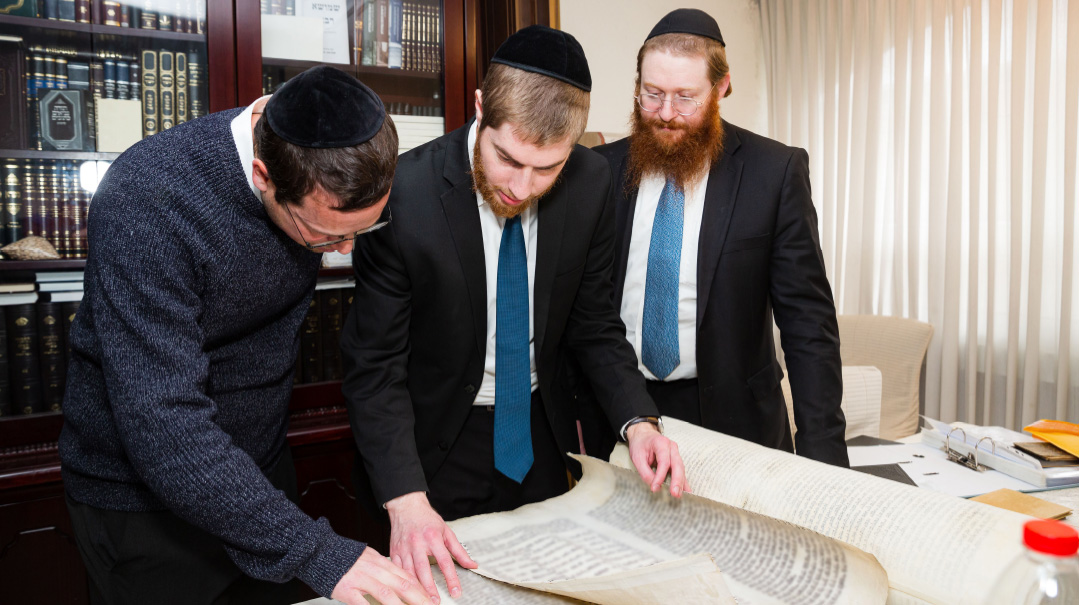
Mishpacha’s Yehuda Geberer with Rabbi Eli Simcha Hellmann and Rabbi Avraham Bamberger. “Ask your average frum Yid about traditional German Jewry, and he’ll probably mumble about Yekkishe minhagim and Rav Samson Raphael Hirsch”
Keeping the Faith
Crusades, blood libels, pogroms, and expulsions gradually drove the Jews of Ashkenaz out of Germany. The Polish kingdom beckoned to them with promises of religious freedom and economic opportunity. As the locus of Ashkenazi Jewish life shifted to Poland in the 16th century, leaders such as the Rema in Krakow and the Maharshal in Lublin inaugurated a new golden age in Diaspora life.
Jewish life in Germany was sustained in part by rabbis from Poland who migrated west and found positions. Some famous examples include Rav Yehoshua Falk, the Pnei Yehoshua, who served as rabbi of Frankfurt; Rav Pinchas Horowitz, the Baal Hafla’ah; Rav Aryeh Leib Ginsburg of Metz, the Shaagas Aryeh; and Rav Raphael HaKohein of Hamburg.
But despite Poland’s rise as a Torah center, German Jewry continued to produce prominent leaders educated in local yeshivos: the Maharam Schiff; Rav Yair Chaim Bachrach, the Chavos Yair; Rav Yaakov Reischer; Rav Yeshaya Pick Berlin; Rav Nesanel Weil, the Korban Nesanel; and Rav Moshe Sofer, the Chasam Sofer.
Other notable scholars include Rav Yedidya Tia Weil, son of the Korban Nesanel and author of numerous seforim; Rav Yaakov Poppers, the Shev Yaakov of Frankfurt; Rav Mendel Kargau, the Gedulei Taharah of Fürth; Rav Yaakov Berlin of Fürth; and Rav Yosef Yuzpa Shamesh of Worms, who wrote a manuscript on the Haggadah that was recently published by Achsanya shel Torah.
All the social changes swept in by industrialization, urbanization, and political liberalization in the 18th and 19th centuries would wreak havoc on the structured communal life that had so long sustained Jewish existence in Germany. By the mid-19th century, the majority of German Jewry had undergone mass acculturation and integration into general society, and a significant percentage had even assimilated.
At this point in the story, it is customary to move on to the next chapter and pick up the story of Torah life in Eastern Europe. Perhaps the valiant efforts of Rav Samson Raphael Hirsch with his Frankfurt kehillah would warrant a mention. A true expert would bring up Rav Ezriel Hildesheimer and his Rabbinical Seminary in Berlin. What gets lost in this narrative is the untold story of the many German Jews who remained steadfast in their traditions and faith. This was especially true of the small kehillos, some as small as 30 families, dotting southern Germany; secularization hardly touched them, and the majority remained Orthodox well into the 20th century.
One prominent yeshivah had flourished since the Middle Ages in Nuremburg and then in Fürth, and was still operating in the opening decades of the 19th century. This bastion of Torah produced many leaders of German kehillos and was headed by impressive individuals such as Fürth native Rav Wolf Hamburger. His tenure began in 1799, and he fought to keep the doors of the yeshivah open in the face of rampant secularization and authorities who wanted it closed.
During the final decades of the yeshivah’s existence, Rav Hamburger taught an entire generation of Germany’s future rabbinical leadership, including Rav Yaakov Ettlinger, the Aruch Laner; and the Würzburger Rav, Rav Yitzchak Dov Bamberger. As late as 1820, Fürth was still prominent enough that the Chasam Sofer considered moving there from Pressburg to assume the rabbinate of the town and head its prestigious yeshivah. But in 1830, authorities finally closed the Fürth yeshivah, ending another glorious chapter of Toras Ashkenaz.
Another significant rabbinical leader of this period who has been almost completely forgotten is Rav Avraham Bing. He grew up in Frankfurt and learned in the yeshivah of Rav Nosson Adler, where he developed a lifelong friendship with his younger contemporary, the Chasam Sofer. Following a stint as a dayan in Frankfurt, he assumed the rabbinate in the Würzburg district, where he oversaw a renaissance of traditional Jewish life in Bavaria. He also opened a yeshivah, whose talmidim would include the Aruch Laner; Chacham Isaac Bernays of Hamburg; Rav Nathan Marcus Adler, chief rabbi of the British Empire; and his successor as rav of Würzburg, Rav Yitzchak Dov Bamberger.
A Sheltering Tower
Perhaps more than any other modern German rabbinical leader, it’s the great Würzburger Rav, Rav Yitzchak Dov (Seligmann Baer) Bamberger, whose personality permeates Kollel Achsanya shel Torah and serves as an inspiration to its leaders. The Würzburger Rav towered over the Orthodox world in 19th century Germany; his rabbinate included responsibility for tens of surrounding towns in the Bavarian countryside, and Rav Bamberger devoted himself to improving religious infrastructure and protecting Yiddishkeit.
Rav Seligmann Baer Bamberger was selected by his rosh yeshivah, the aging Rav Avraham Bing, as his preferred successor. His candidacy faced significant opposition from progressive elements of the community, but he was duly elected.
The Würzburger Rav started a wide range of initiatives to strengthen Orthodoxy and fend off secularization. Aside from heading the yeshivah in Würzburg, he established a rabbinical seminary that followed an intense six-year program. As a leading posek, he corresponded with many contemporaries within Germany and across Europe. His close talmidim included his ten sons and sons-in-law, who became rabbanim and dayanim across Germany; and other well-known Torah personalities such as Rav Shlomo Carlebach, av beis din of Lubek; Rav Dovid Tzvi Hoffmann, rosh yeshivah of the Berlin Rabbinical Seminary; and Rav Asher Stern, av beis din of Hamburg.
Since both roshei kollel of Achsanya shel Torah take pride in being direct descendants of the Würzburger Rav, I ask them what connects the vision of the kollel with the legacy of their illustrious forebear.
“The kollel is essentially named for the Würzburger Rav, and it follows his derech halimud,” says Rabbi Bamberger emphatically. “He was a visionary during this perilous time for Klal Yisrael, bridging the world of Torah with the modern age of the Enlightenment. The Würzburger Rav managed to craft a unique blend, shutting out secularization while embracing education to a great degree.”
Rabbi Hellmann elaborates at length on that methodology. “The well-known hashkafah of Torah im derech eretz is at its core an approach for properly mastering secular knowledge. Rav Samson Raphael Hirsch explained that Torah is absolute and unconditional while other branches of knowledge are to be regarded as auxiliary. Only if a person uses secular knowledge to aid Torah study, while keeping it subordinate, has he properly performed this monumental task. There are many examples provided by Rav Hirsch on how even a person who has a basic level of Torah knowledge and a basic level of secular knowledge can become wiser by playing the latter into the former.
“With this idea clear, we can explain Rav Bamberger’s difference of opinion on this matter in just a few words. The Würzburger Rav was worried about this hashkafah being misinterpreted. He therefore built his educational institutions with the focus that gadlus ba’Torah should not be compromised even one iota by the pursuit of other knowledge. First and foremost, talmidim must become steeped in Torah and avodah. Only so prepared should they spend time learning other branches of knowledge, because with this approach, the most beautiful harmony will burst forth. It is with this hashkafah that we approach a sugya — the alef-beis is to understand every aspect of the sugya. With that background, we continue a bit further and plumb the depths of practical halachah through the understanding of the metzius.”
It’s almost a scientific approach to learning; the Torah comes alive in a real-life setting, where it’s applied to a specific halachic scenario. The actual context of the practical halachah is investigated and researched from all angles, utilizing every branch of knowledge that may have relevance to the topic at hand. It becomes abundantly clear that this approach is as relevant for a Jerusalem beis medrash in 2023 as it was for a defensive Orthodoxy in Würzburg in the 1860s.
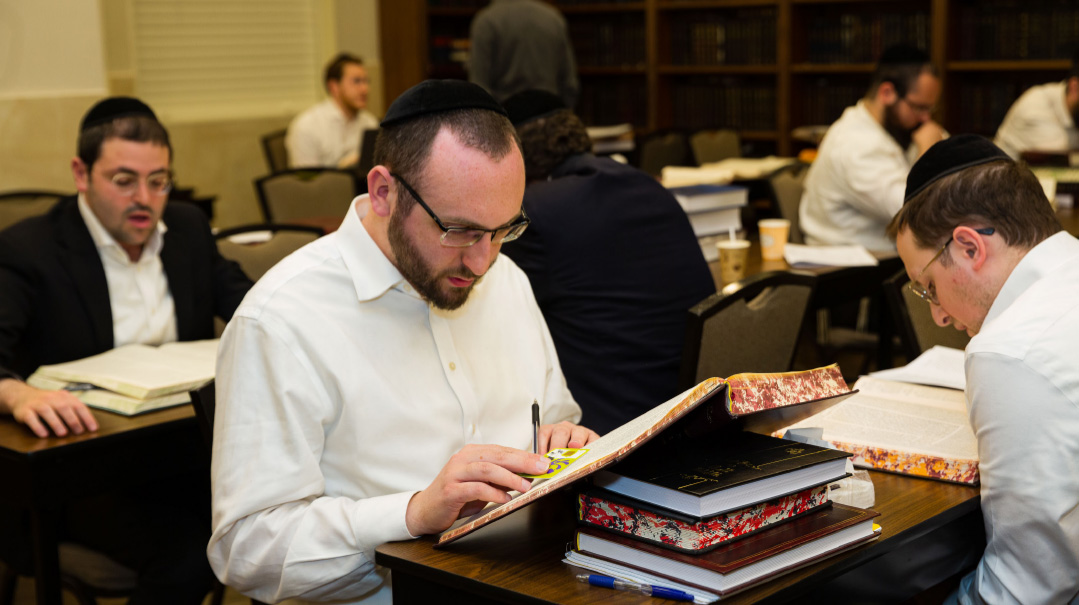
Kollel Achsanya shel Torah, nicknamed “Kollel Ashkenaz.” This pioneering venture is bringing a largely forgotten past to life
A Hill of Beans
The kollel is bringing another aspect of Ashkenazic Torah tradition back to life as well. Rabbi Hellmann beckons me to examine a 300-year-old sefer Torah in his possession. Though any centuries-old sefer Torah is invested with holiness and history, the significance of this particular treasure is its rare writing style.
“This is the old, traditional Ashkenaz script that had been in use for centuries. It has almost completely disappeared,” says Rabbi Hellmann.
I ask Rabbi Hellmann why this sefer Torah should be of such particular interest, especially in the context of the kollel and its goals.
“There are actually two good reasons why this unique Torah scroll matters,” he says. “First, the more obvious consideration is that it’s a centuries-old halachic tradition that should be preserved. But beyond that, the traditional Ashkenaz script followed certain halachic parameters that don’t apply with the current standard script used in the stam of today.
“Take a look at this pasuk at the end of parshas Noach — ‘Vayamas Terach b’Charan.’ Rashi says the letter nun of Charan is hafuch. Today’s sifrei Torah don’t show anything of the sort. But this one does. The sofer clearly wanted this letter to be viewed differently, according to a clear halachic tradition in Ashkenaz.”
Rabbi Hellmann, a trained sofer with semichah from Rav Moshe Heinemann, is repairing this sefer Torah so that it can be used. Rabbi Bamberger interjects to point out that his partner has also authored several halachic works of his own.
“And all this is inspired by the legacy and research methodology of the Würzburger Rav?” I’m pressing this point, because it is of historical interest in resurrecting a learning method from 19th century Germany that applied scientific research to psak halachah.
With a flourish, Rabbi Hellmann presents a box of ancient coins. “There are areas in halachah that utilize Chazal’s measurement of a gris, which is some sort of bean. The question is, how large is a gris? Which beans did Chazal have? What did they look like, how big were they? Many Rishonim, Acharonim, and great poskim grappled with this, and some compared the size of a gris to the coins of their day. A millennium of halachic analysis has used many coins from different countries, minted by various monarchies, to estimate the elusive size of a gris.”
Rabbi Hellmann believes he is applying the Würzburger Rav’s methods to solve this puzzle. His collection, painstakingly collected over several years, gathers together all of the original coins mentioned by the various poskim throughout the ages, from the Holy Roman Empire to Czarist Russia. Numismatists and historians would appreciate the history of empires and economics expressed through the collection, but a Torah scholar would appreciate the effort expended in resolving the dilemma of the gris. This is the approach the Würzburger Rav impressed upon his students to adopt in psak halachah.
Scavenger Hunt
Rabbi Bamberger describes another way the kollel is carrying the Würzburger Rav’s legacy forward. The kollel is producing pamphlets on various sugyas in Shas that trace sources from the Rishonim through to the practical application of the halachah — and adding sources from first prints or even manuscripts of gedolei Ashkenaz that are relevant to the topic at hand.
“We wish to incorporate forgotten Torah sources from Ashkenaz into the sugya,” Rabbi Bamberger says. “Part of the excitement here is that the participants are engaged in redeeming Torah that has rarely been seen before. They are writing chaburos on it and spreading it further. This research, coupled with the new sources made available, is a trailblazing approach that makes the Torah study here so attractive.”
To that end, Rabbi Bamberger says the kollel has attracted very capable yungeleit who have already mastered the standard masechtas studied in yeshivos. “These young men are without a doubt future poskim and maggidei shiur.”
Piecing together a halachic sugya for one of these pamphlets often requires detective work. For an analysis of hilchos niddah, for example, Rabbi Hellmann had to hunt down the responsa of Rav Yehuda Miller, one of the greatest German rabbanim of the 18th century. A volume of Rav Miller’s responsa had been published by Machon Yerushalayim several years ago, but the majority of his work remains in manuscript.
Rabbi Hellmann narrates the chase. “In this sugya, there is a fundamental teshuvah written by Rav Yaakov Reischer of Prague in his sefer Shevus Yaakov. I noticed that the shoel, the one who asked him the question, was Rav Yehuda Miller of Deutz. That got me thinking that maybe Rav Yehuda Miller had himself written more on this topic. After retrieving his printed responsa, I came across one that explores the topic even further. It was a letter he wrote to Rav Yaakov Poppers of Frankfurt, the famed author of Shev Yaakov. I was ecstatic over the find. But then I noticed that in middle of the letter, he writes, ‘I have written extensively on this issue in a letter to Rav Tzvi Ashkenazi, the Chacham Tzvi.’ I went searching and managed to find the original manuscript that he wrote to the Chacham Tzvi in the Russian National Library. Upon closer inspection, I noticed that Rav Miller wrote, ‘u’kevar kasavti al zeh b’makom acher [I’ve already addressed this elsewhere].’ ”
Suspecting that there might be yet a third teshuvah written on the topic, Rabbi Hellmann continued his scavenger hunt, and he found it in a third archive. Thus, Rabbi Hellmann was able to assemble three different components from disparate sources to complete a sugya authored by one of the great forgotten poskim of the 18th century.
His greatest nachas, however, came after it had been printed and introduced to the kollel members, who then toiled over a lost Torah that was finally being redeemed after several centuries. “Of course we plan on publishing Rav Yehuda Miller’s halachic responsa from the manuscripts we’ve found,” Rabbi Hellmann adds. “Along with dozens of others. There’s a long list.”
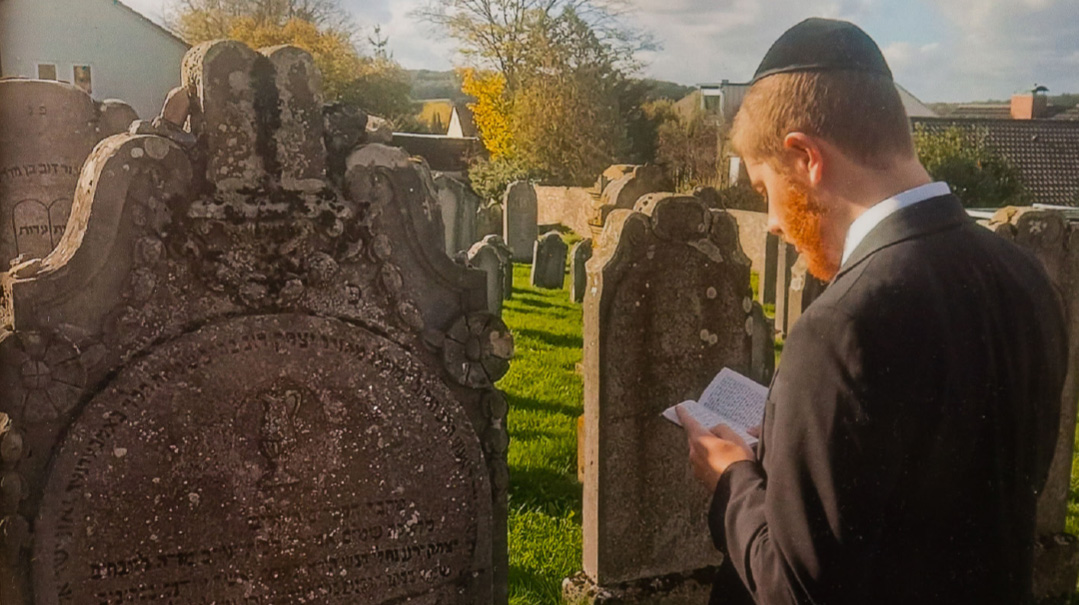
Rabbi Hellmann in front of the kever of his ancestor, the Würzburger Rav, in Hochburg. The Rav was a visionary, bridging the world of Torah with the modern age of the Enlightenment
More Than Customs
That long list includes several seforim written by the Würzburger Rav. Rabbi Hellmann hopes to republish all of them to present this legacy to today’s generation of Torah scholars.
“Over the last five years, we have amassed an extensive library with the help of generous donors,” says Rabbi Hellmann. “This collection includes first prints and numerous manuscripts, many of which are from the Würzburger Rav. Many of them are out of print today, despite the fact that they were best-sellers in the 19th century.”
Those works cover basics of practical halachah in crucial and sensitive areas, such as hilchos safrus and shechitah, and are still considered foundational. One of the Würzburger Rav’s most unique contributions was Amirah L’Beis Yaakov on hilchos niddah, challah, hadlakas neiros, and melichah. Written in the German vernacular using alef-beis, it was geared for the average Jewish housewife who had never learned rabbinic Hebrew. As part of Rav Bamberger’s battle to maintain traditional Jewish life in the face of secularization, he wanted to be able to address the community directly and convey basic precepts of halachah. Amirah L’Beis Yaakov sold thousands of copies, went through more than 18 printings, and was also translated into other languages.
And yet even with this literary output, and all the other efforts made to preserve Jewish tradition, Torah life nevertheless collapsed in Germany during this period. The overwhelming majority of German Jews had abandoned traditional observance by mid-century, and many had assimilated and even intermarried. Jewish identity was being eroded, and only a small and embattled minority still clung to Orthodoxy.
But the German rabbinical leaders of this period didn’t think in terms of the odds. They went on the offensive, authoring seforim and maintaining institutions of Torah education that nourished and fortified these Orthodox communities right up until the Holocaust.
Now this legacy is being renewed within the confines of a modest beis medrash in Jerusalem. Manuscripts of the past are being rescued from distant and dusty archives, nearly forgotten halachic responsa are being uncovered and hotly debated in lively discussions by a new generation of Torah scholars. Rabbis Hellmann and Bamberger escort me out of the beis medrash to the sounds of Toras Ashkenaz being studied now, here.
“Many young Yekkishe bochurim of the current generation attend mainstream yeshivos and don’t hear Torah and Ashkenaz in the same sentence,” Rabbi Hellmann says. “At most, they’ll hear the term ‘minhag Ashkenaz’ thrown around from time to time.
“We’re not about customs. Others have covered that ground pretty thoroughly. We’re about the lost Torah from a time period in Germany that many assumed didn’t have much to offer in terms of rabbinic scholarship. This legacy offers such an abundance of Torah that can make anyone proud.”
An Overlooked Chapter
German rabbanim from the 17th to the 19th centuries represent a shining example of perseverance in the face of secularization. The Rishonim of ancient Ashkenaz compiled Torah works while confronting Crusades, pogroms, and expulsions; these latter German rabbis toiled as the Jewish masses assimilated into the surrounding culture.
And then came the Holocaust. With the rise of the Nazi Party in 1933, most Jews left Germany over the course of the decade. Those who remained were wiped out in the Final Solution. Though Yekkishe communities did later experience rebirth in other climes, their contributions to preserving Orthodoxy have generally been memorialized only in terms of the rise of neo-Orthodoxy and its confrontation with modernity.
The efforts of Rav Samson Raphael Hirsch, Rav Ezriel Hildesheimer, and the Würzburger Rav bore prodigious fruit in the 19th century. But the Torah scholarship of the period has been largely forgotten. It’s worth mentioning that it continued into the 20th century as well: A trio of prewar German rabbanim, Rav Yechiel Mechel Schlesinger, Rav Baruch Kunstadt, and Rav Yonah Merzbach, established Yeshivah Kol Torah in Yerushalayim.
The novels of Rabbi Marcus Lehmann are another illustration of this phenomenon. Many fondly recall the literary joys of The Family of Y Aguilar, Akiva, Bustenai, The Count of Coucy, and many other pioneering classics of kosher reading material. Rabbi Lehmann has been credited with saving German Orthodoxy by essentially creating this genre. He also happens to have been a great Torah scholar who served as rav of Mainz for decades and was well known as a prominent posek and defender of Orthodoxy. How many today are aware of or have studied his commentary Meir Nesiv on Talmud Yerushalmi, Pirkei Avos, and the Haggadah?
(Originally featured in Mishpacha, Issue 962)
Oops! We could not locate your form.







